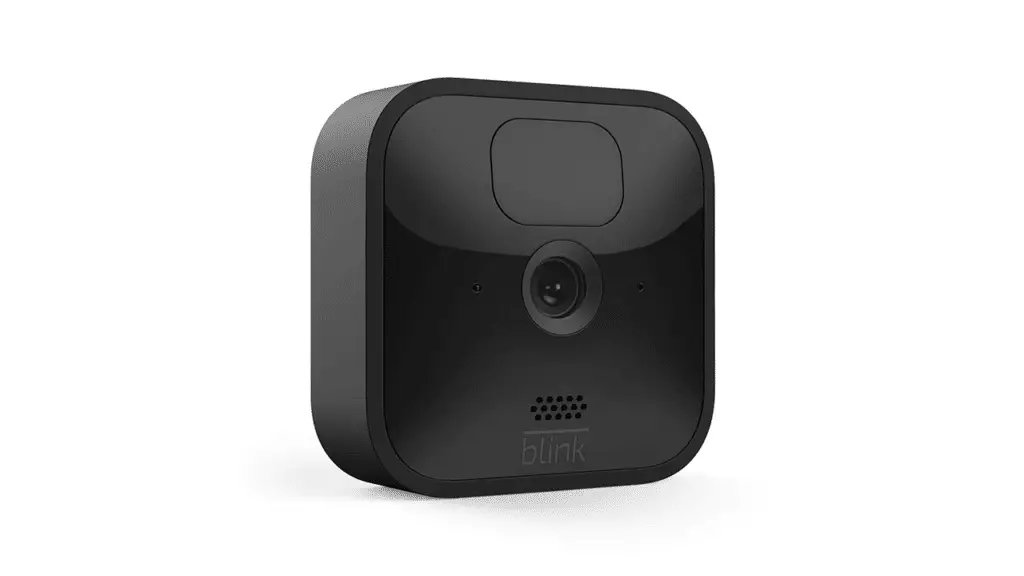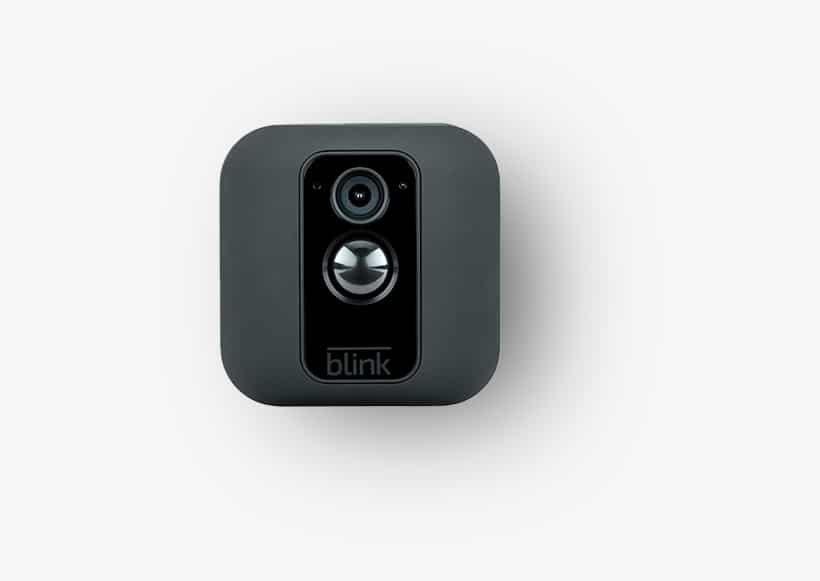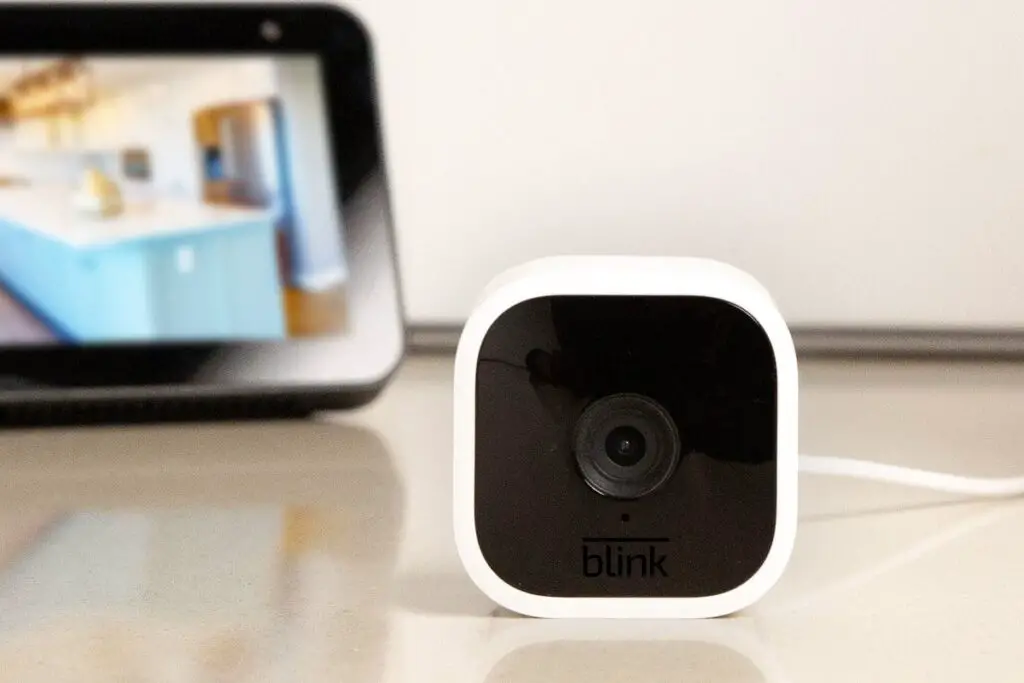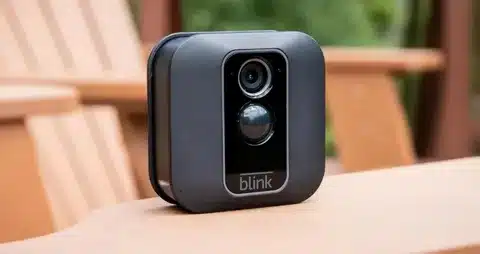Introduction
How To Move Blink Camera From One System To Another: Home security is a paramount concern for homeowners and renters alike. Wireless security cameras like Blink have become popular due to their ease of installation and versatility in monitoring properties. Wireless design and remote access make the Blink camera system easy to operate. However, consumers may need to migrate their Blink cameras between systems due to relocation or upgrading.
The Blink cameras from the existing system without losing any valuable data or settings. This section will encompass strategies for safely detaching the cameras from the current system and preparing them for integration into the new one. Following that, we will dive into the setup phase, guiding users through the step-by-step process of adding Blink cameras to their new system. This section will emphasize the importance of careful configuration to guarantee optimal performance and security.
Blinking cameras between systems lets homeowners and users stay vigilant and defend their assets easily. Use this guide to confidently operate Blink cameras during system transitions for safety and peace of mind. The first segment covers preparation, including equipment and prerequisites. This includes configuring the old and new systems and establishing a stable internet connection.

How do I transfer my Blink cameras to a new module?
If you are replacing an existing Sync Module system with a new Sync Module, you must delete the original Sync Module before adding the new one. You will not have to delete or re-add any cameras in the existing Sync Module system. Once you add the new Sync Module to your Blink account, the system is ready to use.
Set Up Your New Module: Connect your new Blink module to your Wi-Fi network before transferring. It should be ready for Blink account configuration. Launch the Blink app on your smartphone or tablet and log in with your credentials. Install the app from your device’s app store and log in.
Remove Cameras from Old Module: From the app’s main screen, find your Blink camera module. Select the module and select “Device Settings” or “Module Settings”. Find device removal or deletion in the module. Remove cameras one by one using on-screen directions. After removing all cameras from the old module, enter the app’s settings for your new module. Add devices or cameras to the module. The software guides you through connecting each camera to the new module. This usually requires scanning a QR code or entering the new module’s pairing code.
Check Camera Function: After adding cameras to the new module, quickly check each camera’s functionality. Live video, motion detection, and other home security technologies should be tested. If your cameras had specific settings or schedules in the old module, you may need to modify them in the new module. Review and tweak custom parameters to your liking.
Can Blink cameras be transferred?
Remove all Blink devices from your account. If you gift or sell your Blink device to someone else, you must remove that device from your Blink account first before anyone else may use it. If your equipment is not deleted from your account, the new owner will not be able to add it to their Blink account.
Remove Cameras from the Current Location/System: If you are moving the cameras from one location to another, you need to physically uninstall them from their current positions. If you are transferring them from one Blink system to another, you’ll need to remove them from the existing Blink account or module.
Reset the Cameras (Optional): Blink cameras can be reset to their factory settings before transferring them. This step is optional but can be useful if you want to start fresh in the new location or system.
Set Up the New Location/System: Ensure that the new location or Blink system is ready for the cameras. This includes setting up the new Blink module and connecting it to your Wi-Fi network.
Add Cameras to the New Location/System: Use the Blink mobile app to add the cameras to the new location or system. This process usually involves scanning a QR code or entering a pairing code to connect each camera to the new Blink module.
Configure Settings (Optional): If you had specific settings or schedules for your cameras in the old location/system, you may need to reconfigure them in the new setup.
Can you add Blink camera to two systems?
Yes, you can! Now available on both the iOS and Android app, you can access and use multiple Blink systems via a single Blink App account (no more having to log in and out!).
Share Access to Cameras
If you have multiple users in your household or multiple Blink accounts, you can share access to the cameras with other users. This way, others can view and manage the cameras from their devices without the need to physically add the camera to a different sync module.
Using Multiple Blink Accounts
If you have Blink cameras in two separate locations or properties, you can have different sync modules for each location. Each sync module will be associated with its own Blink account, and you can switch between accounts within the Blink app to view the respective cameras.
Buy Additional Cameras
If you want to have the same cameras accessible from two different sync modules, you can purchase additional Blink cameras and add them to each system separately. This way, you can have identical cameras in both locations, even though they are not the exact same physical cameras.
Can you use old Blink cameras with new system?
Yes, the Sync Module 2 works as a traditional sync module and works with all generations of Blink cameras from our original Indoor (gen 1), XT, and XT2 – to the new Blink Wired Floodlight, Video Doorbell, Indoor (3rd Gen), Outdoor, and Mini.
Reset the Cameras (Optional)
If you want to start fresh with the old Blink cameras in the new system, you can reset them to their factory settings. This step is not always necessary, but it can be helpful if you encountered issues with the cameras in the previous system or if you want to clear any previous configurations.
Set Up the New Blink System
Ensure that the new Blink sync module is set up and connected to your Wi-Fi network. If you don’t have a new sync module yet, you’ll need to obtain one to create the new system.
Add Cameras to the New System
Using the Blink mobile app, you can add the old cameras to the new sync module. This process typically involves scanning a QR code or entering a pairing code to connect each camera to the new system.
Configure Settings (Optional)
If you had specific settings or schedules for the cameras in the previous system that you want to retain, you can configure them in the new system as well.
Cameras may not be transferred to the new system. If you have an active Blink cloud storage subscription, your new system will start storing new footage after the cameras are added, but the old footage from the previous system may not be accessible in the new account.

Can you delete a Blink camera and reinstall it?
After deletion
If you plan on adding the camera again to this system or another system, remove the batteries or unplug it for at least 15 seconds before attempting to add the camera. To reactivate a deleted camera, use the standard process of adding a camera to your Blink system.
Delete the Camera
Open the Blink mobile app on your smartphone or tablet. Navigate to the camera you wish to delete from the system. Access the camera settings, usually represented by a gear or cog icon. Look for the option to “Remove” or “Delete” the camera from the system. Confirm the deletion when prompted to complete the process.
Reinstall the Camera
If you want to reinstall the same camera to the same system, simply follow the initial setup process. Add the Blink sync module to your system if it’s not already set up.
Access the Blink app and go to “Add a Device” or “Add Camera” option. Follow the on-screen instructions to pair the camera with the Blink sync module. If you want to reinstall the camera to a different system or location, you can add it to another Blink sync module by following the same setup process as above.
The Blink cameras from the existing system without losing any valuable data or settings. This section will encompass strategies for safely detaching the cameras from the current system and preparing them for integration into the new one.
The first section will delve into the preparation stage, covering the necessary equipment and prerequisites required to proceed. This will include ensuring that both the old and new systems are set up correctly and have a stable internet connection.
Is Blink compatible with other systems?
Blink supports most smartphones, tablets, and many Alexa-enabled products. Select the app store link or scan the QR code to download the latest version of the Blink app. for iOS 14 and later. for Android v6.
Amazon Alexa integration
Blink cameras work with Amazon Alexa to monitor live feeds and arm and disable cameras. This integration is possible because Amazon owns Blink.
Help with IFTTT
Blink integrates with IFTTT (If This Then That) for simple automation and interaction with other smart devices and services. Integration options are limited compared to other smart camera systems.
Few Smart Home Platform Integrations
Blink is gradually adding smart home platform compatibility, although it may not offer as many integration choices as other manufacturers.
Not directly integrated with other camera systems
Blink cameras are incompatible with other brands. Blink cameras can’t be added to other brands’ camera systems by default.
Since my last update, features and integrations may have changed. Visit the Blink website or contact customer service for the latest information on Blink’s interoperability with other systems or smart home platforms.
Can I relocate a Blink camera anywhere
Remove the camera gently if it is attached or positioned. Detach mounting brackets and adhesives gently to avoid damage.
Camera reset (optional)
While optional, you can reset the camera to factory settings before relocating it. This step is useful if you wish to start over in the new location or had camera troubles in the old one.
Set Up New Location
Make that the camera’s new position has a stable Wi-Fi signal. Prepare mounting brackets and other installation accessories for the new location.
Camera Installation
Install the camera by mounting or positioning it on a solid surface. Ensure you have the camera security accessories if the new location necessitates a different configuration.
Camera reconfiguration (optional)
You can adjust camera settings and schedules at the new location if you wish to keep them.
Can I add the Blink camera to an existing system with other cameras?
Yes, you can add the Blink camera to an existing system with other cameras. The Blink app allows you to have multiple cameras under one account, and you can manage and monitor them all from the same app.
Prepare the Camera
Ensure that the Blink camera you want to add is fully charged (if it’s a battery-powered model) and within range of the Blink sync module. It’s essential to have a stable Wi-Fi connection in the area where you plan to install the new camera.
Access the Blink App
Open the Blink mobile app on your smartphone or tablet, and log in to your Blink account using your credentials.
Add the Camera to the System
From the app’s home screen, tap on the “+” icon or look for an option like “Add Camera” or “Add Device.” The app will guide you through the process of pairing the new camera with the existing Blink sync module.
Scan the QR Code (or Enter Pairing Code)
The app will ask you to scan the QR code located on the back of the new camera (or enter the pairing code manually). This action connects the camera to the existing Blink sync module.
Configure Settings (Optional)
If desired, you can customize the camera’s settings, such as motion detection sensitivity, recording length, and scheduling, to suit your preferences and security needs.

Conclusion
Preparation is essential for a seamless transition. The old and new systems must be properly configured and have stable internet connections for a smooth changeover. Protecting data and settings when removing Blink cameras from the system is crucial. Users can avoid migration delays by following safe detachment procedures.
The setup process comprises incorporating Blink cameras into the new system. Users may maximize performance and security by properly setting and adding cameras. To avoid issues, pay attention to detail and follow the instructions. Keep track of passwords, account information, and firmware updates for a smooth transfer.
Whether it’s relocating to a new property or upgrading to a more advanced system, having the knowledge and confidence to handle the camera migration process is invaluable. The camera system move during a time when the property is less vulnerable to potential security threats. Picking a time when there is lower foot traffic or fewer activities around the premises can reduce the chances of missing any critical events during the transition.

